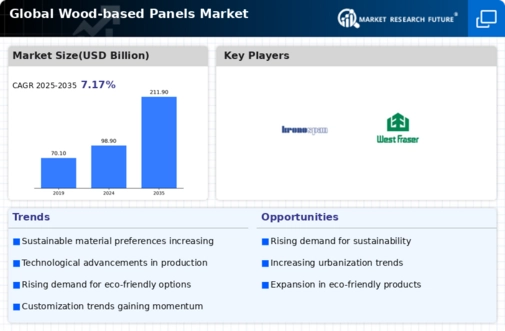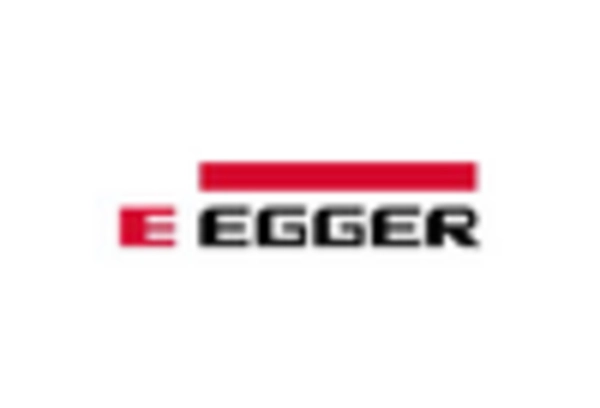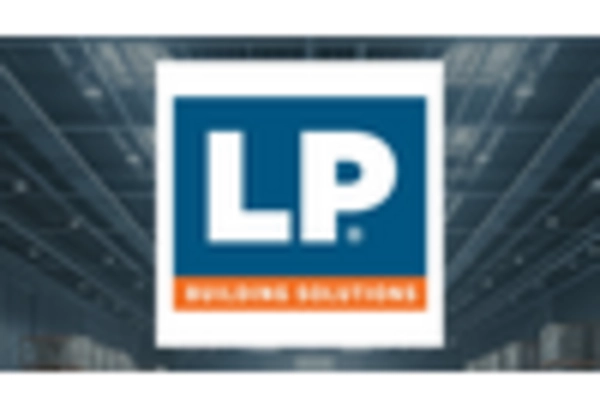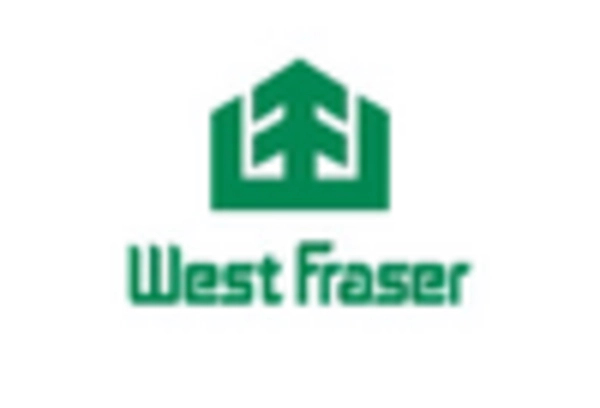Market Analysis
In-depth Analysis of Wood Based Panels Market Industry Landscape
The wood-based panels market operates within a dynamic framework influenced by a myriad of factors, shaping supply, demand, and pricing dynamics. At its core, this market encompasses various products like plywood, particleboard, and medium-density fiberboard (MDF), serving diverse industries including construction, furniture, and packaging. One of the primary drivers of market dynamics is the construction sector, which heavily relies on wood-based panels for structural and decorative purposes. Trends in construction activities, influenced by factors like economic growth, urbanization, and housing demand, directly impact the demand for these panels. Additionally, the furniture industry, another major consumer of wood-based panels, is subject to shifts in consumer preferences, design trends, and disposable income levels, all of which affect demand patterns.
Supply dynamics in the wood-based panels market are influenced by factors such as raw material availability, technological advancements, and regulatory frameworks. The availability and cost of wood fiber, a key raw material for manufacturing panels, are influenced by factors like forestry practices, land use policies, and environmental regulations. Moreover, advancements in manufacturing technologies, such as the development of advanced adhesives and production processes, play a crucial role in enhancing efficiency and product quality, thereby influencing supply dynamics. Regulatory factors, including environmental regulations and standards related to emissions and formaldehyde content, also shape the operating environment for manufacturers, affecting both supply capabilities and production costs.
Market dynamics are further shaped by global trade patterns and geopolitical factors. The wood-based panels market is highly globalized, with significant trade flows between regions driven by factors like cost competitiveness, demand-supply disparities, and tariff policies. Changes in trade policies, such as tariffs or trade agreements, can have profound effects on market dynamics by altering the competitiveness of domestic manufacturers relative to their international counterparts. Moreover, geopolitical factors like currency fluctuations, trade disputes, and geopolitical tensions can introduce uncertainties affecting market sentiment, investment decisions, and trade flows, thereby influencing pricing dynamics.
Pricing dynamics in the wood-based panels market are subject to a complex interplay of supply-demand fundamentals, production costs, and competitive pressures. Fluctuations in raw material costs, particularly wood fiber prices, directly impact production costs for manufacturers, influencing pricing decisions. Moreover, demand-supply imbalances, driven by factors like seasonal variations, supply chain disruptions, or unexpected changes in demand patterns, can exert short-term pressures on prices. Additionally, competitive dynamics within the industry, characterized by factors like market consolidation, technological differentiation, and branding strategies, play a role in determining pricing strategies adopted by market players.
Environmental and sustainability considerations are increasingly shaping market dynamics in the wood-based panels industry. With growing awareness of environmental issues and sustainability concerns, stakeholders across the value chain are placing greater emphasis on factors like the use of certified sustainable wood sources, recycling and waste management practices, and the adoption of eco-friendly production technologies. These considerations influence consumer preferences, regulatory frameworks, and industry standards, thereby impacting market dynamics in terms of product innovation, supply chain practices, and market positioning.


















Leave a Comment